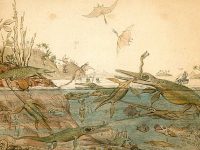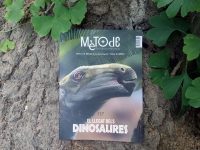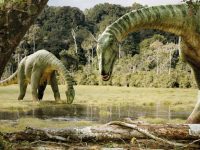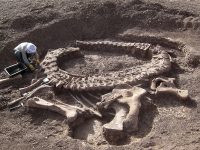Interview with Andrés Santos-Cubedo
«At the Maestrat basin, we have discovered dinosaurs that did not exist anywhere else in the world»
Palaeontologist
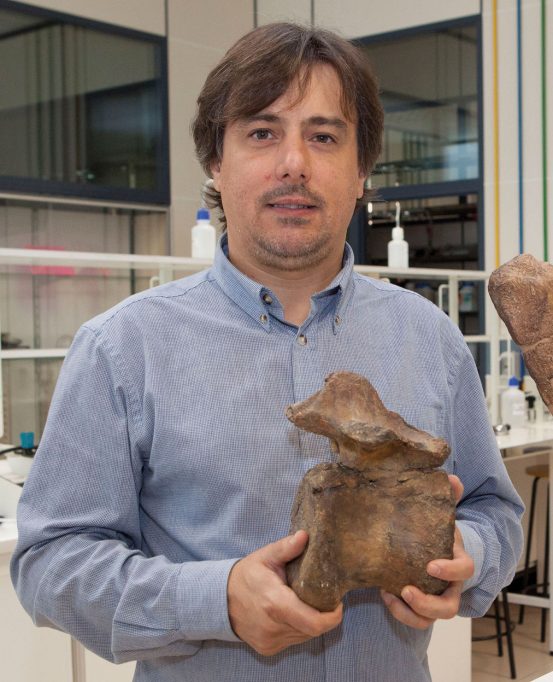
Andrés Santos-Cubedo is a researcher in the Area of Crystallography and Mineralogy at the Universitat Jaume I in Castellón. He is also director of the Bejís Museum, the Cinctorres Palaeontological Collection and Portell, Terra de Dinosaures. His research work has focused on the fossil sites in the province of Castellón and their relationship with other European faunas. Santos-Cubedo is part of a group of researchers who have made an outstanding discovery in Cinctorres. Since 18 May 2023, Protathlitis cinctorrensis (‘Champion of Cinctorres’) is officially a new species of dinosaur. Andrés Santos-Cubedo has participated in Mètode’s monograph “The legacy of the dinosaurs” with an article about dinosaurs in the Maestrat basin. Now, we talk to him to know, among other questions, how this discovery took place and what anecdotes are behind the particular name of the dinosaur.
How can new dinosaur fossils be found?
In the first place, a chance discovery may occur. For example, a person walking in the Maestrat area once found some remains that looked like bones, reported it to the Town Council and, indeed, they were dinosaur bones. A second way to find new fossils is to plan a search for them. Once we palaeontologists know an area that might contain palaeontological remains, we mark the most favourable areas for finding deposits on the geological maps, and we go out with our GPS and our rucksack to walk around the area and look for them. Once we have located them, comes the next step. We register them, inform the Regional Government, and then we secure the funds to start a new excavation campaign.
In your article for Mètode, you talk about how the Maestrat basin is ideal for the discovery of dinosaur fossils. What is the history of this area?
Dinosaur fossils have been known in this area for more than a hundred years. In fact, it is one of the first areas where dinosaurs were described in Spain. During the 1920s, excavations and surveys were carried out, but when the Civil War came along, all this was forgotten. It was not until the 1980s that excavation activities were resumed in Teruel and Castellón, and we had to wait until the new century for the basin to take on special importance. Since then, we have gone from not having any new dinosaurs to currently having four. This is also of great importance at the European level, as we have discovered dinosaurs that did not exist anywhere else in the world. Now work continues, with research and excavations, and new discoveries will surely be made.

Palaeontologists working at the site of Ana, in Cinctorres, during the seventh excavation campaign in 2011. / Photo: Grup Guix
You are part of the team that made the discovery of the dinosaur which you have named Protathlitis cinctorrensis. Can you explain how this discovery came about?
It was made at the Ana site, in the municipality of Cinctorres (Els Ports region, Castellón). We have carried out eight campaigns at this site since 2002, and almost a thousand fossils have been found, most of them from dinosaurs, but also crocodiles, sharks… As far as dinosaurs are concerned, we have found herbivores, such as sauropods and ornithopods, and also carnivores. Of the latter, we found the teeth of two different types of dinosaurs. During the fourth and fifth campaigns we also found vertebrae from the tail of one of the carnivores, but we could not yet determine whether it was a new species. We were fortunate that in the last field season, in 2008, we found an almost complete jawbone. This, together with the teeth and vertebrae we already had, allowed us to compare it with other similar dinosaurs and confirm that it was a new species. It was a type of spinosaur, which fed on fish and other animals, including other small dinosaurs. They were dinosaurs that lived near the coast: the Els Ports area is a mountainous region nowadays, but 127 million years ago it was a coastal area, with small estuaries and beaches.
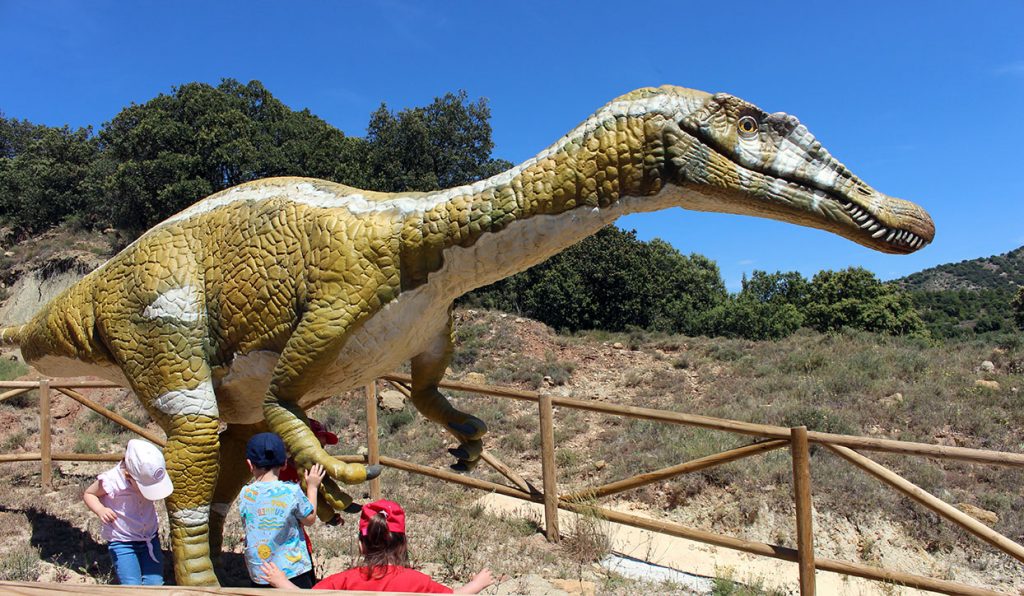
Reconstruction of the new dinosaur Protathlitis cinctorrensis at the site Ana in Cinctorres. / Photo: Grup Guix
Can you explain the reason behind the name Protathlitis cinctorrensis?
Three of the four people who have participated in the study of this dinosaur live in Vila-real, and I, particularly, am a football fan. Shortly after the pandemic, when there were still restrictions, I was able to travel to see Vila-real play in the Europa League final. We won, and since what I know how to do and what I do for a living is palaeontology, when last year we started to study the material, and on the occasion of the club’s centenary in 2023, I thought we could dedicate a part of the name to the club. The other half is dedicated to Cinctorres, the town where it was discovered – hence cinctorrensis – and the first half is dedicated to the Europa League title and the centenary of the club, so we named it champion, which in Greek is protathlitis.
Dinosaurs have a strong presence in science fiction, through films such as Jurassic Park. To what extent would you say that the depictions of the animals are true to what scientists know about them?
In cinema, certain licences are always taken to make the film more interesting, but with dinosaurs it has been an evolution. The first films to depict dinosaurs showed them as they were thought to be at the time: slow, lumbering animals… As science began to disprove this idea, the films reflected this. There has been a parallel evolution between scientific advances and the way they have been portrayed in fiction. In the Jurassic Park saga, the early films showed things that were changed in later films because it was now scientifically proven that this was not the case. From the first film, Steven Spielberg had scientific advisors, palaeontologists, and he has continued to do so.
Beyond the important role that dinosaurs play in science fiction, do you think palaeontology has the public recognition it deserves?
In palaeontology there are two topics that have a major media impact and public following: one is dinosaurs, and the other is everything related to human evolution. There is a lot of media attention, a lot of concern, and a lot of interest in continuing research and excavations on these subjects. But it is true that palaeontology is often overlooked in other areas that are no less important. As far as the area where I work, the Valencian Community, is concerned, if I had to highlight something that could be improved, it would be investing in the promotion and conservation of the sites we have. We have very important sites here that are often not known or open to visitors. We should make a commitment to open them up to visitors and promote our heritage better.

